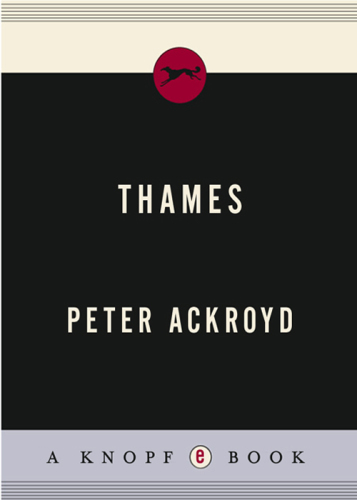
Thames
The Biography
کتاب های مرتبط
- اطلاعات
- نقد و بررسی
- دیدگاه کاربران
نقد و بررسی

Starred review from August 4, 2008
For a river with such a famous history, England's Thames measures only 215 miles. Acclaimed novelist and biographer Ackroyd (Hawksmoor
; Shakespeare
) invites readers on an eclectic, sprawling and delightful cruise of this important waterway. “The Thames has been a highway, a frontier and an attack route; it has been a playground and a sewer, a source of water and a source of power,” writes Ackroyd. Historians believe the river may have been important for transport and commerce as early as the Neolithic Age. The ancient Egyptian goddess Isis has a long association with the Thames, which was used for baptisms, both pagan and Christian, during the Roman Empire. The British tribes tried to use the Thames as a defense against Julius Caesar's invasion, and the Normans built the Tower of London and Windsor Castle on the Thames as symbols of military preeminence. The royal waterway carried Anne Boleyn to both her coronation and her beheading, and famously served as inspiration for paintings by Turner and Monet and for Handel's Water Music
, commissioned to associate the German-born George I with a potent source of English power. Elegant and erudite, Ackroyd's gathering of rich treats does the famed tributary proud. Illus., maps.

July 15, 2008
Because he has 30 books and numerous awards under his belt, it's difficult to imagine Ackroyd ("London: The Biography") writing a truly bad book, but this one comes perilously close. It's best to dip into at bedtime: every page contains intriguing information about the Thames, those who live near it, and the activities surrounding it. But the book is overwrittenbloated and flabby, with too little spine. The first parts are highly impressionistic: Ackroyd treats the "sacral" Thames as though it were purposive, but his argument doesn't convince, and the reasoning throughout the entire narrative is questionable. Ackroyd fails to provide a clear historical narrative or topographical sequence. Instead, he has organized the book around a series of loosely connected topics, and the jumping around is confusing. Long listspeople, places, products, even colors, sounds, and smellsdon't help. (In four pages, he describes 35 separate springs and wells!) If you don't possess a priori familiarity with the towns, springs, and so forth abutting the Thames, you will gain little from reading these lists. Ackroyd's observations on the connection between art and the Thamesan area where he should shineare overly enthusiastic. Nonetheless, as many Ackroyd fans may still want to read this puffy book, it is recommended for large public collectionsbut with reservations.David Keymer, Modesto, CA
Copyright 2008 Library Journal, LLC Used with permission.

September 15, 2008
The Thames River is a relatively shortstream (215 miles); nevertheless, it is packed with powerful history. (It has been called liquid history because within itself it dissolves and carries all epochs and generations.)Ackroyd is a distinguished writer of both fiction and nonfiction. The Thamesand he make a good pair, as demonstrated in what Ackroyd calls a biography of the river. In coverage that is not scholarly but not casual, eitherdefinitely for the dedicated readerthe author views the river from every angle imaginable: geologically, geographically, economically, politically, and, most interestingly, psychologically (to Ackroyd, the Thames is a metaphor for the country through which it runs and has done more to establish the idea of Englishness than any other national feature). But the river as a subject for artists and writers is a topic that does not goneglected. From ancient times to the present day, the author charts the history of human habitation and usage of this vastly significant river.(Reprinted with permission of Booklist, copyright 2008, American Library Association.)

























دیدگاه کاربران